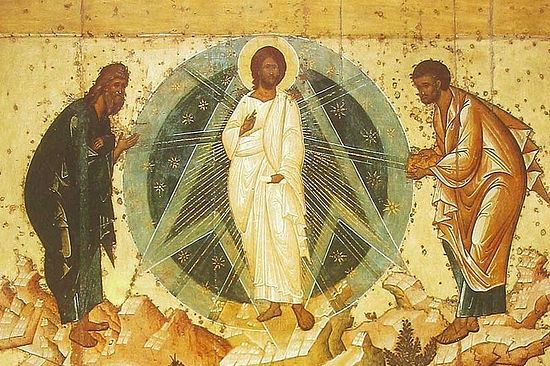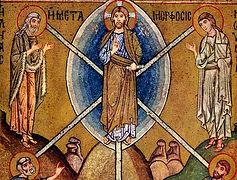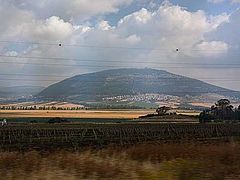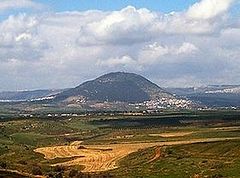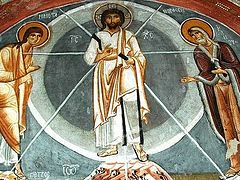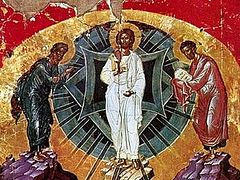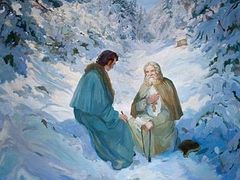On August 6/19 , the Orthodox Church celebrates one of the Great 12 Feast Days—that of the Transfiguration of the Lord on Mount Tabor, which is in what is now the territory of Israel.
Our Lord Jesus Christ transfigured Himself only before His closest disciples: Peter, James and John, 40 days before His crucifixion, which took place on March 30 according to the old calendar. Consequently, the Transfiguration occurred in late February, during what is now Great Lent. That is why the Holy Fathers, in ancient days, moved this feast day to another date. On September 14 , we celebrate the Elevation of the Cross of the Lord, when we once again remember the sufferings of Christ the Savior on the Cross.
The Holy Fathers, then, counted back 40 days from that holiday and established August 6 as the Transfiguration of the Lord, a celebration of the transfigured flesh of mankind. The God-Man revealed Himself to his disciples in the way that He was to become after His Resurrection from the dead, and the way the bodies of the righteous will appear after the final, universal resurrection.
We know from the Holy Gospel that the Body of the Risen
Lord shone, was able to immediately travel great
distances, walk through closed doors, and become instantly
invisible. Yet He also possessed the characteristics of
our present bodies: the Risen Christ ate earthly
food—bread, baked fish and honey, and before all the
Apostles, He walked great distances just as we do, with
Luke and Cleopus, to Emmaus, blessed and broke bread,
etc.
This is all very difficult to perceive for the human mind
which lives in a three-dimensional world. But what is
impossible for man is possible for God, as Holy Scripture
teaches us.
We Christians, even today, are faced with a great challenge—which we face with the aid of the Church Mysteries, of fasting and prayer—and that is to be transfigured here on earth, in our souls and bodies, which really happens to the saints of God, the righteous and simply good Christians.
They bear witness that this holy effort will yield such
wondrous spiritual fruits, such joy and satisfaction, that
they are incomparable to any joys and consolations on
earth, which are so eagerly sought by most of
mankind.
May the Lord grant all of us the chance to begin the
transformation of our souls and bodies, so that we could
taste at least a crumb of this joy before even reaching
Heaven.
The Lord wishes to help us in this holy matter. He stands at the doorway to our hearts and knocks in order to enter our souls and help transfigure us.
This is well described by the renowned poem of Grand Duke Konstantin Konstantinovich:
I knock and wait at the door of your inn,
Open the door and let Me in.
I’m naked, weak, the lowest of low.
My road is hard. Far must I go.
Penniless beggar through the world I roam,
Knock and wait at many a home.
Who’ll hear My voice? Who’ll take My
load,
And bid Me enter his abode?
To such a one I’ll come and call him Mine,
Break bread with him and share the wine.
You’re weak, exhausted from labors and strain.
With Me your strength you will regain.
With My hand I shall dry your tears of pain
And you will never cry again.
I shall console you, your pain I’ll feel,
And share with you your evening meal.
I knock and wait at the door of your inn.
Open the door and let me in.
Poem translated by Kosara Gavrilovic.

